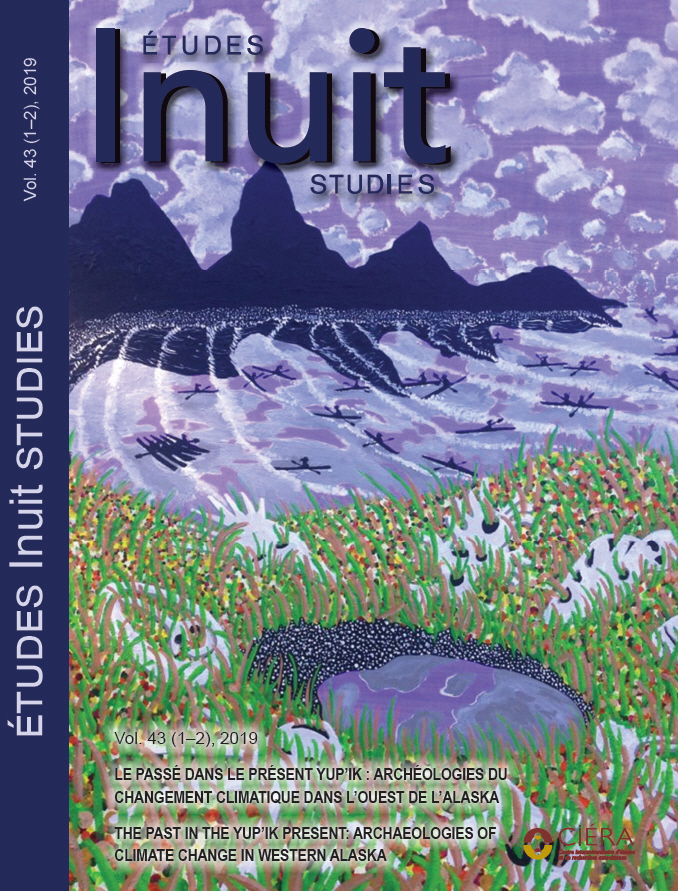Abstracts
Abstract
There is a fascinating and prima facie perplexing patterning in Inuttut, the Labrador dialect of Inuktitut, wherein the quite regular markers of singular and plural in verbal inflectional markers appear inverted in second person forms. We explore this linguistic problem and show two things: that progress toward a solution is facilitated by incorporating representations of linguistic intent, and also that the consideration of intent, by adding a level of data, opens the phenomenon for deeper understanding by presenting new hypotheses to be explored. Making such features available in grammatical derivations allows the systematic generation of patterns that would otherwise be impossible, thereby obviating gaps in the potential for grammatical explanation and highlighting psychologically plausible mechanisms for diachronic change. It is disadvantageous for any theory of grammatical competence to allow any phenomenon of strong grammatical patterning to remain unaccounted for. By viewing grammatical structures as the result of tool invention by individuals and groups in the linguistic past, the study of the intellectual history of linguistic innovation can potentially uncover particularly clever and insightful processes related to desiderata of cultural adhesion. This approach opens new hypotheses for the evolution of the language from the proto stage.
Keywords:
- Inuktitut,
- Inuttut,
- second person,
- number inversion,
- tool grammar,
- cognitax
Résumé
Il existe en Inuttut, le dialecte labradorien de l’inuktitut, un motif surprenant et fascinant à première vue, dans lequel les marqueurs assez réguliers du singulier et du pluriel dans les marqueurs flexionnels verbaux apparaissent inversés à la seconde personne. Nous explorons ce problème linguistique et montrons deux choses : que l’avancement vers une solution est facilité par l’incorporation de représentations de l’intention linguistique et que la prise en compte de l’intention, en ajoutant un autre niveau de données, ouvre le phénomène à une compréhension plus profonde, en présentant de nouvelles hypothèses à explorer. Rendre ces caractéristiques disponibles dans les dérivations grammaticales permet la génération systématique de modèles qui seraient autrement impossibles, ce qui permettrait d’éviter les lacunes dans le potentiel d’explication grammaticale et de mettre en évidence les mécanismes psychologiquement plausibles du changement diachronique. Il est désavantageux pour toute théorie de compétence grammaticale de laisser les phénomènes de forte structuration grammaticale inexpliqués. En considérant les structures grammaticales comme le résultat d’inventions d’outils par des individus et des groupes du passé linguistique, l’étude de l’histoire intellectuelle de l’innovation linguistique peut potentiellement révéler des processus particulièrement intelligents et perspicaces liés aux desiderata d’adhésion culturelle. Cette approche ouvre de nouvelles hypothèses pour l’évolution de la langue à partir du stade proto.
Mots-clés:
- Inuktitut,
- inuttut,
- seconde personne,
- inversion de nombres,
- outil de grammaire,
- cognitax
Appendices
Appendices
References
- BERGSLAND, Knut. 1997. Aleut Grammar. Fairbanks: Alaska Native Language Center.
- FORTESCUE, Michael. 1983. A Comparative Manual of Affixes for the Inuit Dialects of Greenland, Canada, and Alaska. Copenhagen: Nyt Nordisk Forlag.
- FORTESCUE, Michael. 1998. Language Relations across the Bering Sea: Reappraising the Archaeological and Linguistic Evidence. London: Bloomsbury.
- FORTESCUE, Michael. Forthcoming. “The Sources of Eskimo-Aleut Verbalizing and Nominalizing Affixes.”
- FORTESCUE, Michael, Steven JACOBSON, and Lawrence KAPLAN. 2010. Comparative Eskimo Dictionary: With Aleut Cognates. Fairbanks: Alaska Native Language Center.
- GEOGHEGAN, Richard Henry. 1944. The Aleut Language: The Elements of Aleut Grammar with a Dictionary in Two Parts Containing Basic Vocabulary of Aleut and English. Edited by Fredericka I. Martin. Washington, DC: United States Department of the Interior.
- JACOBSON, Steven A. 1979. A Grammatical Sketch of Siberian Yupik Eskimo. Fairbanks: Alaska Native Lanugage Center.
- KAPLAN, Lawrence D. 1981. “Phonological Issues in North Alaska Inupiaq.” Alaska Native Language Center Research Papers 6.
- LANZ, Linda A. 2010. “A Grammar of Inupiat Morphosyntax.” PhD diss., Rice University. Accessed November 23, 2018. https://scholarship.rice.edu/handle/1911/62097.
- PIRURVIK. n.d. Inuktitut Tusaalanga. Accessed November 23, 2018. http://www.tusaalanga.ca/node/2504.
- RISCHEL, Jorgen. 1974. Topics in West Greenlandic Phonology: Regularities underlying the Phonetic Appearance of Wordforms in a Polysynthetic Language. Copenhagen: Akademisk Forlag.
- SADOCK, Jerrold. 2000. “Aleut Number Agreement.” Proceedings of the Twenty-Sixth Annual Meeting of the Berkeley Linguistics Society: Special Session on Syntax and Semantics of the Indigenous Languages of the Americas, edited by Andrew K. Simpson, 121–38. Berkeley, CA: Berkeley Linguistics Society.
- SMITH, Lawrence R. 1977 Some Grammatical Aspects of Labrador Inuttut. Ottawa: National Museum of Man.
- SMITH, Lawrence R. 1979. “Labrador Inuttut Inverted Number Marking, Exchange Rules and Morphological Markedness.” Linguistics 17 (1–2): 153–68.
- WOODBURY, Anthony. 1981. “Study of the Chevak Dialect of Central Yup’ik Eskimo.” PhD diss., University of California Berkeley

